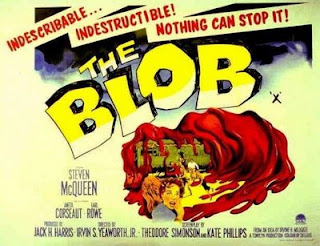Quantum of Synopses - Novel Synopsis Basics
Publishing your debut novel can certainly seem like an impossible mission. Since you’re following the QueryTracker.net blog, you’ve clearly realized that you’re going to need a special agent for this mission.
And, my little QT's, you need to supply that agent with the requisite bag of cool tricks.
Naturally, your gripping, marketable and, totally polished novel will be immediately available. And, of course, after Elana’s series of posts a couple of weeks ago, your killer query is ready to go as well. But there is one other item you need for your special agent Awesome Proposal Kit.
Yes… THAT item.
More overwhelming to write than a 100K word novel!
More fearsome than the dreaded query letter!
Run, don’t walk… it’s the SYNOPSIS!
But, honestly… the synopsis is not all that scary. I'm going to cover the basic structure of synopses today and the next post will address how to make your synopsis ROCK.
So, here are the rules of engagement:
Formatting: Agents may request synopses of varying lengths depending on their preferences. You should absolutely respect those requests. For a one-page synopsis, use single spaced block text, as you would for a business letter. For synopses longer than one page, use standard double spacing, just as you would for your manuscript.
Point-of-View: Regardless of the POV for the novel you’re marketing, a synopsis is written in third-person, present tense. So, “Dorothy and her friends plan to murder the Wicked Witch of the West,” not “Dorothy and her friends murdered the Wicked Witch” or “The scarecrow, the tin man, and I plan to murder…”
Characters: Focus on only the most relevant characters in your synopsis. Minor characters should be referenced by role, rather than by name. For example, “Scarlett tricks her younger sister’s beau into marriage" rather than "Scarlett tricks her younger sister SUE ELLEN's beau FRANK KENNEDY into marriage.” For main characters that must be identified by name, the first mention of the name should be in all caps. This makes it easier for the agent or editor to remember which character is which (after all, they’ll only have a couple of pages to get to know a whole book’s worth of new characters).
Plot: The synopsis is a way to evaluate your story from a big picture standpoint. Does your plot make sense? Do the events unfold naturally through an effective story arc? Is your ending a satisfying resolution to the story conflicts? The agent needs to know that your basic story works, and that means you have to tell the WHOLE story. Which is not to say you shouldn’t be brief—you don’t need to include every subplot. But you MUST reveal the major conflict’s beginning, development, and resolution. And that means INCLUDING the ending in your synopsis. The query letter is for teasing; the synopsis is spoilerific. Tell the WHOLE story.
Language: As you distill your manuscript down to a few pages, your word choices become critical. The synopsis is not the place for unnecessary adverbs and adjectives. It is also generally not a place for excerpts and dialogue passages. The language in your synopsis should be clear, concise, and easy to read.
With so many rules for such a short document, it can seem impossible to compose a synopsis that does everything it needs to do and still manages to be interesting to read. I’ll be addressing some tips on how to accomplish that goal in my next post.
So stay tuned! Part II will be posted this Wednesday, March 23rd.
H.L. Dyer, M.D. writes women's fiction and works as the Clinical and Academic Director for the Hospitalist program at a teaching hospital near Chicago. In addition to all things literary, she enjoys experimental cooking and composing impromptu parodies to annoy close friends and family. More can be found on her personal blog, Trying to Do the Write Thing.



5 comments:
Wish I could tweet this. I have so many writer friends who might be interested in this post series. Looking forward to Wednesday's post.
Thanks for the great info.
Ha ha! Just did all this about a week or so ago. Not an easy endeavor, but well worthwhile. Great tips!
I actually printed this out a few months ago, and even though it wasn't that clear or user friendly, I was still able to pick up on a pointer or two.
I found the post that the blog had about writing your synopsis chapter by chapter extremely helpful and in fact was able to come up with a very good first draft to my synopsis (8 pages), which I was eventually able to distill down to about 2 1/4 pages.
I just finished mine a few weeks ago. I think for the most part I accomplished the task. I look forward to the rest of the series. Thanks.
oh, so nice article.
Not all the people understand why it's so important to write a proper book review that will display how good is your book
Post a Comment